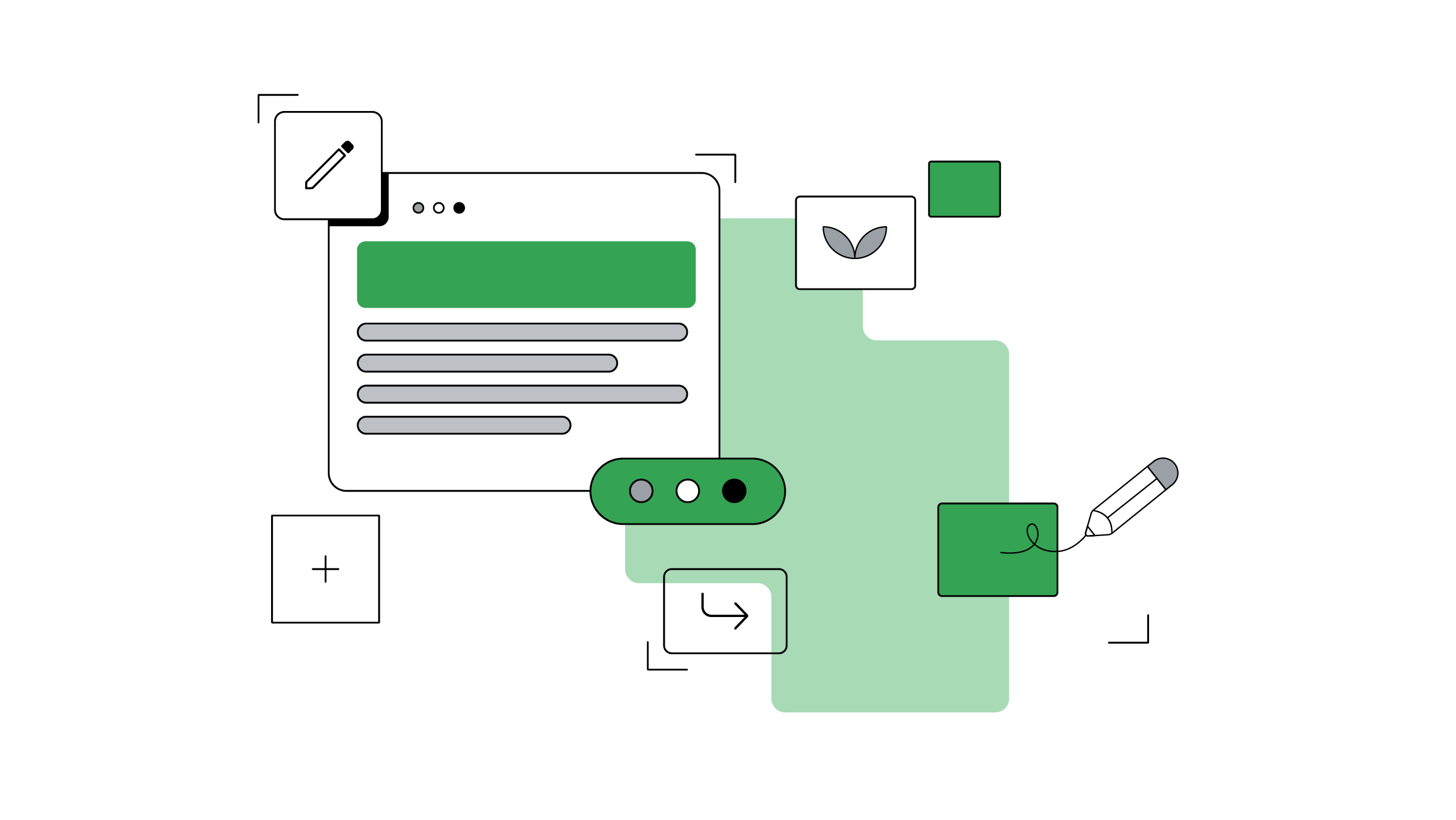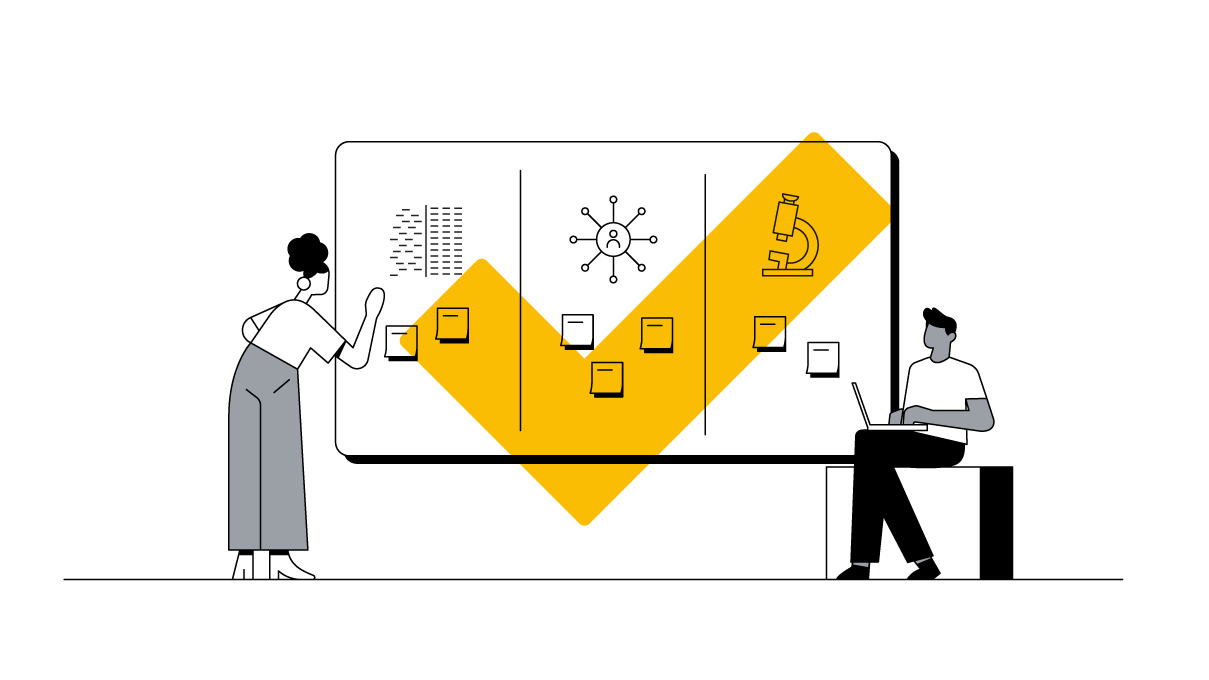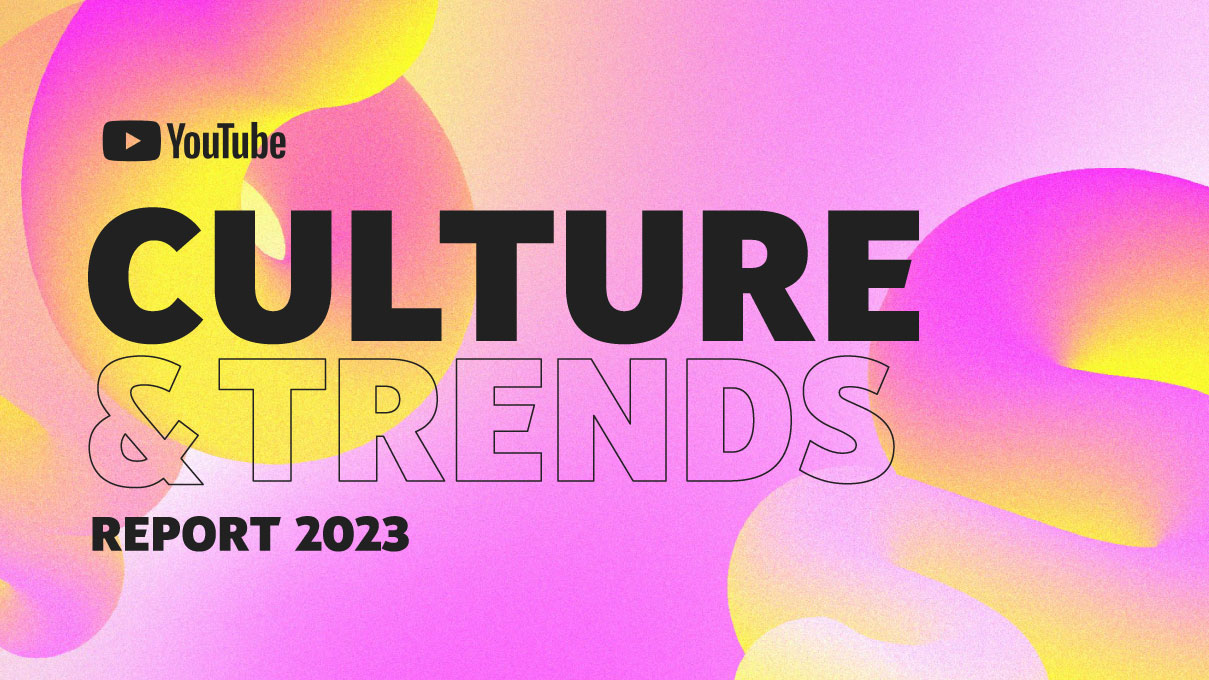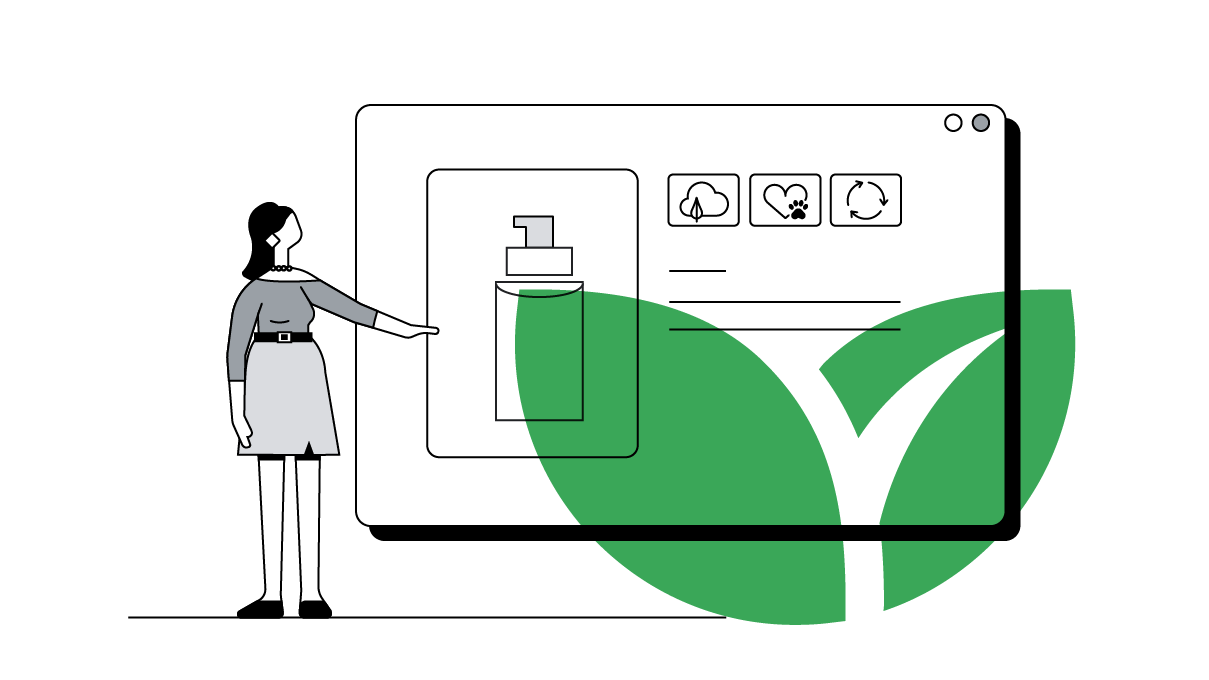There is no shortage of expert advice for brand marketing teams looking for ways to demonstrate commitments to sustainability, and with good reason: Google research has found that 66% of shoppers seek out “eco-friendly” brands. But 72% of survey respondents said they believe companies and brands overstate their sustainability efforts.
Skepticism among customers might be a good thing for brands taking real action. Committing to measurable steps toward reducing emissions is a unique differentiator when companies report results. We spoke to industry leaders at several major brands about how they embed climate action into the way they build digital ad campaigns. Their learnings show that, while there’s no one-size-fits-all approach, brands have many models to choose from when designing campaigns with sustainability in mind.
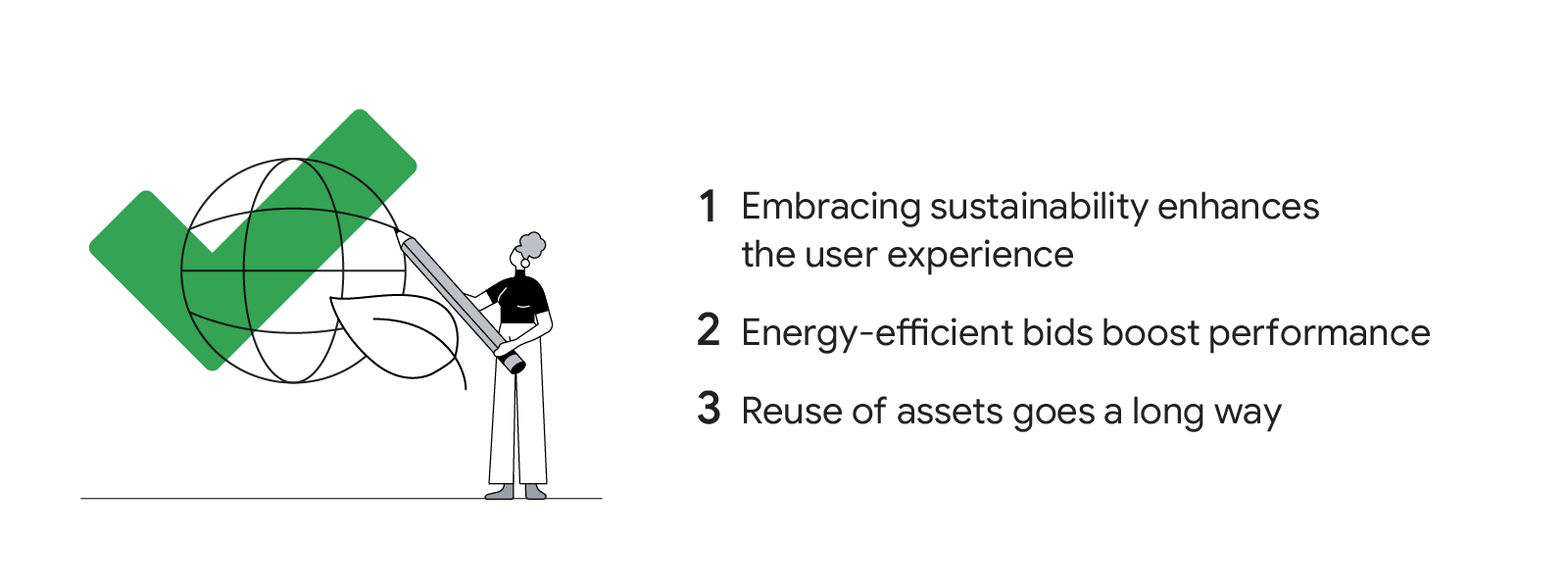
1. Embracing sustainability enhances the user experience
A digital ad contains more than just graphic assets. Trackers, pixels, and snippets of code are added to ads for measurement, attribution, and data acquisition purposes. These can generate significant network traffic. As a result, they can be quite demanding on CPU usage if set up inefficiently, translating to an unpleasant user experience — and a wasteful one.
Since brighter creative tends to take more energy to display, a simple step like moving to dark mode or reducing the brightness of creative assets can dramatically reduce emissions with the added benefit of boosting site performance. After Google partnered with EssilorLuxottica-owned eyewear brand Arnette to introduce a dark-mode browsing option to the retailer’s website, improvements led to both a lower digital carbon footprint and to a 32% higher conversion rate for site visitors who used the feature. Ecograder estimated Arnette’s site to be 59% cleaner than other webpages across the internet.
“No one enjoys navigating a sluggish website,” said Riccardo Menoncin, design lead at EssilorLuxottica. “At Arnette, we recognized the need to introduce ecological efforts while maintaining the high standards we set for ourselves and ensuring our customers have the experience they deserve.”
Squoosh, a web app from Google Chrome Labs that helps developers optimize images for improved web speed, is one of many tools that can help cross-functional teams keep their websites user-friendly. Similarly, products like Campaign Manager 360 and Display & Video 360 let teams A/B test variants, such as viewability, time on screen, and other attention metrics, cutting out extra impressions to improve sustainability and performance.
Moving to dark mode or reducing the brightness of creative assets can dramatically reduce emissions and boost site performance.
A portion of the carbon emitted by a display or video campaign comes from transporting the creative to the end user and executing it on their devices. The larger the size, the more energy it takes. By optimizing the size and compression type of all creative elements, teams can lower emissions. Moving tracking and measurement to the server side using server-side tagging can help. Data clean rooms like Ads Data Hub can reduce the need for trackers by allowing firms access to Google data they can safely combine with their own.
2. Energy-efficient bids boost performance
Publishers have worked hard to make their websites, mobile apps, social presence, and content management platforms less carbon intensive. Many of them have greatly improved their advertising infrastructure as part of their value proposition for brands, selling highly efficient placements in terms of both performance and digital sustainability.
French electricity provider EDF is taking steps to decarbonize its advertising by increasing media efficiency with Display & Video 360. Sustainable media agency Greenbids found that the tool’s Custom Bidding option allowed EDF to optimize its campaign performance, reducing the carbon emissions of ads while generating a high number of conversions. Overall, the brand saw a 17% decrease in cost per conversion and an estimated 13% decrease in emissions.
“For EDF, embodying corporate responsibility extends to practicing responsible communication,” said Ismaïl Berrada, acquisition manager at EDF.
Brands can use media efficiency features such as viewability targeting and attention-based bidding to optimize their media in Display & Video 360 and reach their performance goals — all while reducing carbon emissions. By creating a custom API to steer custom bidding toward the most sustainable placements, the Greenbids team was able to use Google’s AI to achieve its client’s sustainability goals. This extra incentive has implications for the industry at large, according to agency leaders.
“The Greenbids solution facilitates the advertising market’s transition towards industry decarbonization, and our collaboration serves as evidence that it is possible to merge media performance optimization with carbon impact reduction,” said Antoine Minvielle-Debat, deputy general director at Havas Media France, the agency behind the campaign.
3. Reuse of assets goes a long way
Creating assets for any ad campaign — digital-first or not — has a carbon footprint, so it’s important to plan ahead. A team of Google marketers embedded sustainability into the brief for a Google Ads acquisition campaign, evaluating previous campaign assets for their potential reuse and reformatting them as needed.
New creative elements were shot more sustainably by taking travel into consideration. Within Europe, flight travel emits, on average, 5X to 6X more carbon dioxide per passenger-kilometer than train travel. A crew of four videographers traveled across Europe by train, rather than by airplane, to capture in-person interviews. These choices diverted an estimated 500 kilograms of carbon emissions per crew member, according to Google Flights, and cut creative costs by 55%.
When possible, reusing assets across campaigns is an easy way to avoid waste. Versioning an ad is often an easy way to get more mileage out of successful creatives, and now there are more AI-powered tools to help. The trim video tool in Google Ads identifies the most important scenes and brand elements of a longer campaign video, and then remixes them into a 6-second cut.
Teams hoping to take concrete climate action can look to the advertising industry for other examples of operational pivots. With the launch of Ad Net Zero, a global five-point action plan to reduce carbon emissions in advertising, there are now more ways than ever to share knowledge, get inspired, and rise to the moment as an industry.
